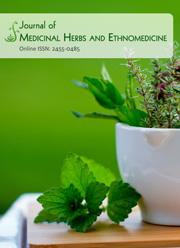Biochemical Properties and Urease, α-amylase Inhibitory Effects of Ocimum basilicum L. (Reyhan)
DOI:
https://doi.org/10.25081/jmhe.2020.v6.6248Keywords:
inhibition, urease, ?-amylase, phenolicsAbstract
With the understanding of the role of antioxidants in preventing degenerative and age-related diseases caused by oxidative stress, and taking into account the multitude of pharmacological applications such as antidiabetic, antifungal, cardioprotection, immunostimulant, interest in plants rich in this respect has increased. Ocimum basilicum L. (purple) is a one-year, fragrant spice herb with its own aroma. In this study, chemical characterization of Ocimum basilicum L. plant was performed and inhibition effects on urease and a-amylase were investigated. Total phenolic content of Ocimum basilicum L. leafs ethanolic and water extracts were 320.08±2.03, 388.15±1.05 mg GAE/100g; total flavonoids were 282.57±1.12, 307.75±0.89 mg QE/100g; antioxidant capacity of samples were 0.46±0.01 and 0.52±0.02 mM Fe+2/mg extract, 0.46±0.01; IC50 values of urease were 18.77±0.22, 20.19±0.15 % and IC50 values of α-amylase were 0.47±0.01, 0.42±0.01 µg/mL, respectively. It is determined that ethanolic extract of leaves is rich in linalool, linolenin, phytol and α-humulene. The datas show that the leaves of the plant may be effective on two important diseases such as Diabetus mellitus and H. pylori.



 .
.